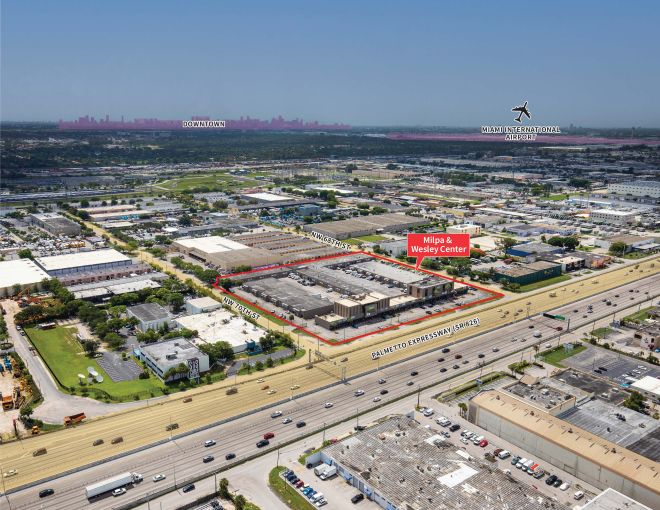Not Sexy, But Hot: Small-Bay Warehouse Demand Catches Fire
By Jeff Ostrowski January 11, 2024 5:22 pm
reprints
With their mom-and-pop tenants and gritty locations, small-bay warehouses are among the least glamorous corners of commercial real estate. But investors don’t care – their interest in the property type has soared.
In one recent example, a six-building portfolio of small-bay industrial space in unincorporated Miami-Dade County sold for $38.5 million – more than twice its 2017 sale price of $15.7 million, according to property records.
Cody Brais, a senior director on the JLL team that represented seller Cofe Properties, said he sees a frenzy of investor interest in small-bay warehouse portfolios. For a single deal, it’s typical to receive more than 100 signed confidentiality agreements from potential bidders, and two dozen offers.
“The investor demand is really strong right now,” Brais told Commercial Observer.
The Miami-Dade sale was for a 182,575-square-foot portfolio known as the Milpa and Wesley Center at 6801-7500 Northwest 77th Avenue. The buildings date to the early 1980s, and ceiling heights are 17 to 19 feet.
In other words, it’s not the type of space that would attract large e-commerce tenants or major freight forwarders. At the Milpa and Wesley Center, tenants include air-conditioning companies, plumbers and roofers, and most occupy less than 10,000 square feet.
“I call them the backbone of every local economy,” Brais said.
The buyer was Miami Palmetto Property, an entity co-sponsored by East Capital Partners and ABR Capital Partners.
Another active acquirer is Basis Industrial, a Boca Raton-based owner of small-bay warehouse spaces that has been snapping up industrial parks in Florida and Texas.
Anthony Scavo, president and chief operating officer of Basis Industrial, said the properties are management-intensive because of the large numbers of small tenants. But he also sees an upside to the model.
“No single tenant makes up more than 5 percent of the rent roll,” Scavo told Commercial Observer last year. “If something happens and you lose one tenant, it really doesn’t move the needle much.”
Jeff Ostrowski can be reached at jostrowski@commercialobserver.com.


